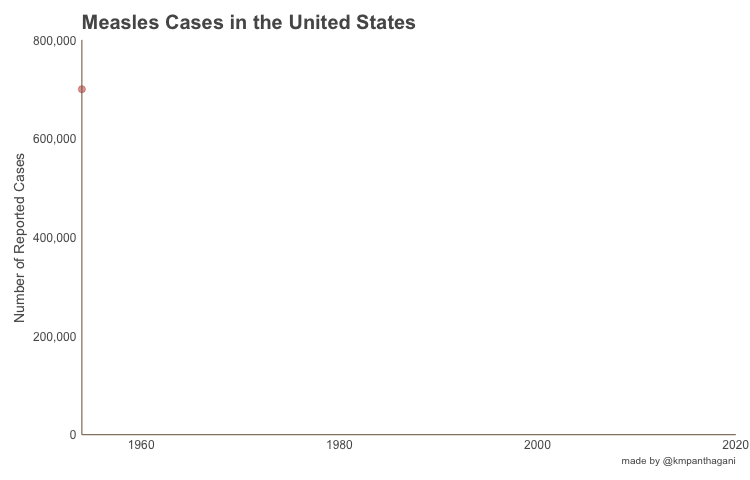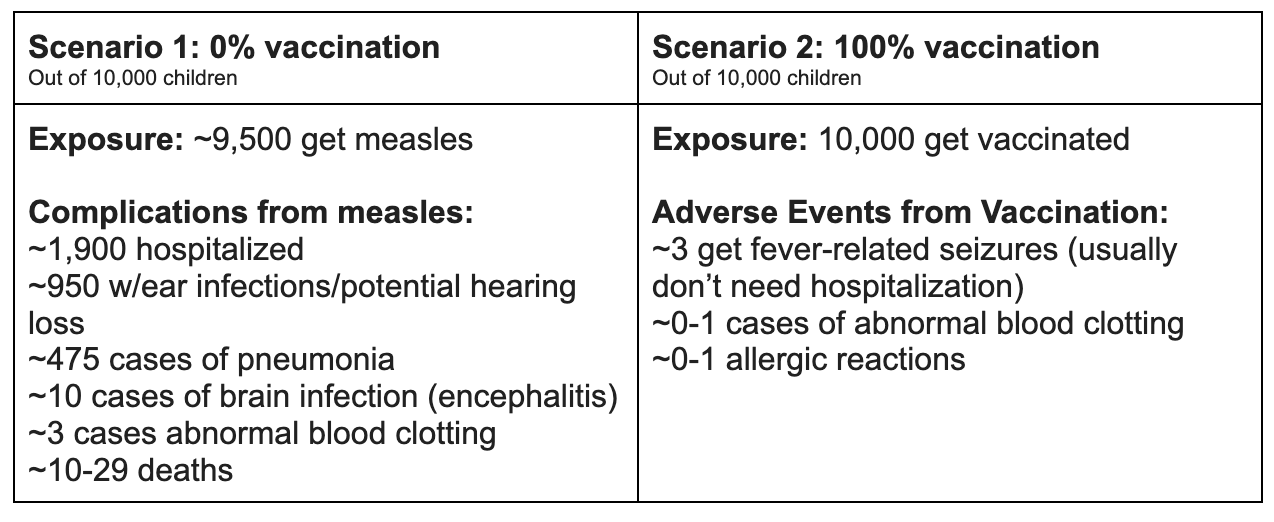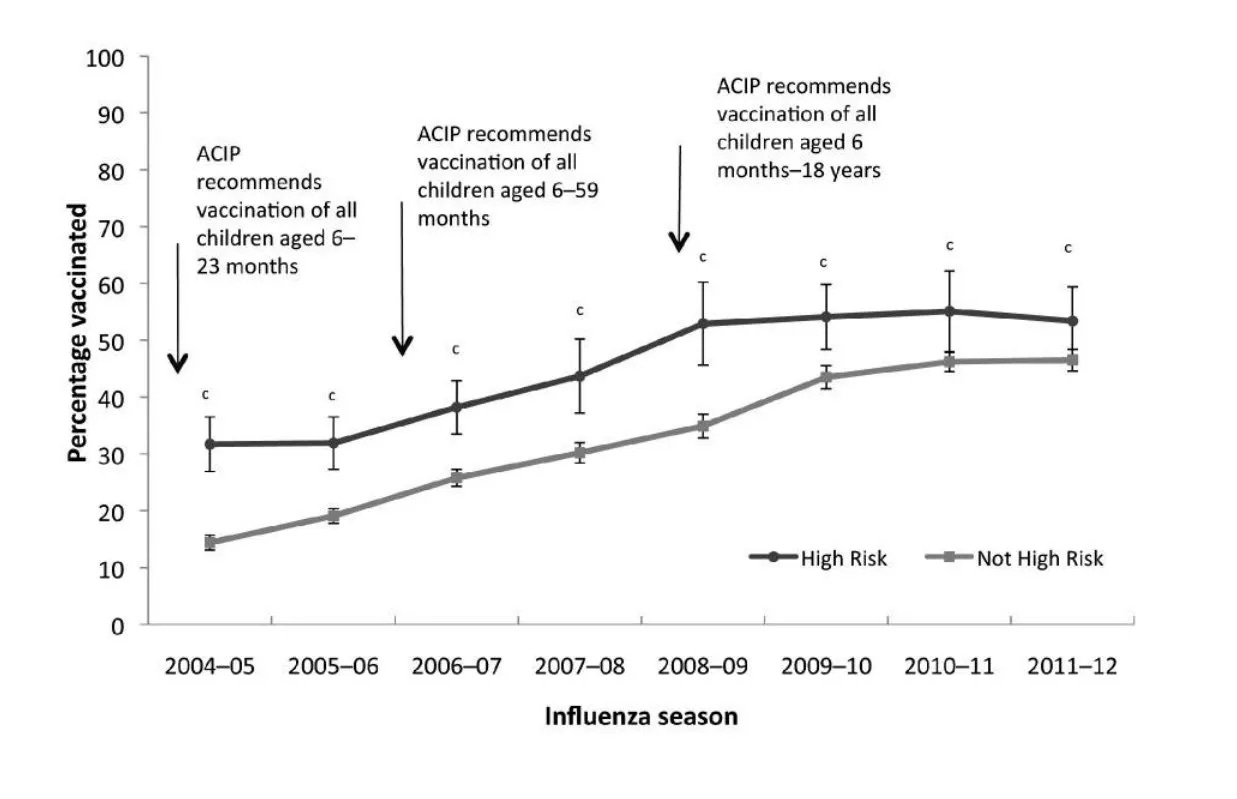Does everyone *really* need routine vaccinations?
Your questions on Hep B, HPV, rubella, measles, and U.S. universal vaccinations
In Friday’s “The Dose” article, YLE noted that routine vaccinations are declining. Afterward, we received many great comments centered around a root question: I understand vaccines have saved many lives, but does everyone really need them?
In many ways, vaccines are victims of their success. Given the drama and polarization surrounding vaccines, it can be hard to find answers that aren’t simplistic, defensive, or angry. And, as everyone discovered during the pandemic, disease risks are often not uniform.
Here are a few of your top questions answered!
“Why are vaccines mandated for diseases that aren’t endemic, like rubella?”
Rubella is the “R” in the MMR vaccine. It’s caused by a virus that spreads in airborne droplets from coughing or sneezing. It’s not endemic in the United States anymore. So yes, the risk is extremely low. Yet, it is mandated for children in all 50 states. Why?
Think of population immunity like a water dam built to prevent flooding. Once it’s built, we won’t have flooding anymore. But if the next generation comes along and says, “Hey, there’s not flooding anymore—do we really need this dam?” and decides to get rid of it, the flooding would return quickly.
Rubella is still alive and well in other parts of the world. In the U.S., we have rubella cases yearly, but only from international travelers. However, outbreaks don’t happen often in the U.S. because population immunity—an invisible shield—stops them in their tracks. In other words, vaccination is the reason rubella isn’t endemic.
Once a virus is eliminated and has no risk of returning—like smallpox—we stop vaccinating for it.
“The NYT image you shared has always bothered me because it doesn’t consider the probability of getting measles is very low. If we consider that, do the vaccine's benefits still outweigh risks?”
This is a fantastic question. The calculation is mathematically and ethically tricky.
This is because the individual decision to get vaccinated changes the risk-benefit calculation for everyone. In other words, your probability of encountering measles is low because so many people around you are vaccinated.
But you’re right—the risk of exposure makes a difference. Let’s look at two scenarios: nobody vaccinated and everybody vaccinated. Before the measles vaccine, nearly every child in the U.S. got measles by age 15, because it’s so contagious. So risk of exposure was near 100% (to be conservative, say 95%). At 100% vaccination, the risk of measles goes to zero. Using the risks in the NYT image, here’s what we get after accounting for exposure risk during childhood:
Is there a situation where the probability of an individual getting a complication from measles infections roughly equals the likelihood of an adverse event from a vaccination? The math to calculate this is really tricky — it depends on not just vaccination coverage, but the risk of an outbreak, the density of the population, the size of an outbreak, etc. Even if this scenario happened, the average vaccine side effect isn’t equivalent to the average measles outcome—for example, fever-related seizures, while understandably scary to watch, fortunately often don’t require hospitalization or result in long-term problems.
At the community level, the benefits of measles vaccination far outweigh the risks. Fighting against infectious diseases is a team sport.
“Could you comment on babies getting the Hep B vaccine even if they aren’t high risk?”
The highest risk factor for Hep B (or HBV) is a history of sexually transmitted infections or multiple sex partners. So, if you’ve only had one partner for a decade, is this even applicable to your baby?
Yes, because the hep B virus is a tricky booger:
The majority of people with HBV globally are unaware they have it. Many who do have it don’t know how they contracted it. If we only give it to people who believe they are high-risk, we will miss many cases.
Hep B virus requires only a very tiny dose to cause infections, which means that even though it is bloodborne and sexually transmitted, it can be spread casually, like through sharing a toothbrush.
It’s very stable in the environment, capable of remaining infectious for weeks and even months on surfaces.
The outcomes can be severe. Mother-to-baby transmission at birth is the most common cause of chronic HBV infection, which can lead to liver cancer, liver failure, and death. If babies contract Hepatitis B disease near birth, 95% develop the chronic form.
The HBV vaccine induces protective immune responses in nearly everyone (80-100%). The vaccine risks are extremely low—the only safety signal found is rare allergic reactions (1 severe allergic reaction for every 2-3 million doses).
“Are there any long-term studies on whether HPV vaccine impacts infertility?”
Some of these concerns stemmed from a case series that was published in 2012, describing six girls who developed primary ovarian insufficiency (POI) from 8 months to 2 years after they received the first human papilloma virus (HPV) vaccine dose. This stirred public concern that the HPV vaccine could cause infertility.
However, case series often generate more questions than answers because they can’t assess causality (correlation doesn’t equal causation). Fortunately, no rigorous lab or epidemiological follow-up studies have found a link:
No effect of HPV vaccination on fertility has been found in 3 studies in rodents.
A strong study in North America followed women planning on getting pregnant. Some of the women (and their partners) had their HPV vaccines, some of them didn’t. The scientists found no difference in infertility. In fact, in some groups, vaccinated women had higher fertility.
Another large study found that 120 of 199,078 female patients at hospitals had POI. There was no difference between those with the HPV vaccine and those without.
“Why does the U.S. have sweeping recommendations when other countries have more targeted vaccine recommendations?”
It’s fair to wonder why. We are all high-income countries. We all have the same vaccines. We are all looking at the same data. How could public health officials come to different conclusions across countries?
Three main reasons:
Behavioral: Universal vaccination recommendations work better than targeted vaccinations because of convenience and education. The U.S. used to have targeted Hep B vaccine recommendations, but uptake was poor. After a universal recommendation, there was a big decline in disease, and many lives (and livers) were saved. The same thing happened with the flu vaccine; universal recommendations increased uptake among high-risk groups. For this reason, in 2025, the U.K. is moving to universal flu vaccinations.
Financial: Many countries’ governments pay for vaccines, so the cost-benefit analysis is a big consideration when making policy decisions—for some countries, it would be too expensive for the government to vaccinate everyone, so they try to find where the money will have the biggest impact.
Safety net: The U.S. has much less wiggle room because of worse healthcare access, social support, healthcare capacity, and health. Casting a larger net through universal vaccine recommendations is more critical than in other countries. I’ve covered this in another YLE post here.
Bottom line
The effect of vaccines is often invisible—infections prevented, childhood deaths that never happened. It’s important to look back and remember why we do what we do. Thank you for your questions, and keep them coming! We’re here to answer them.
Love, KP and YLE
In case you missed it
Big thanks to Ed Nirenberg’s immunity and vaccine-related contribution to this post.
Kristen Panthagani, MD, PhD, is a resident physician and Yale Emergency Scholar, completing a combined Emergency Medicine residency and research fellowship focusing on health literacy and communication. View belong to KP, not her employer.
“Your Local Epidemiologist (YLE)” is founded and operated by Dr. Katelyn Jetelina, MPH PhD—an epidemiologist, wife, and mom of two little girls. The main goal of this newsletter is to “translate” the ever-evolving public health science so that people will be well-equipped to make evidence-based decisions. This newsletter is free to everyone, thanks to the generous support of fellow YLE community members. To support this effort, subscribe below:









This an important topic for me as I had polio before their was a vaccine and remember the general parental fears each summer. Now years later I have mild post polio syndrome - of course, unknown at the time.
Thank you for a catalogue of specific and concise responses to vaccine skeptics. I would have added a chart showing how dramatically infection morbidity and mortality decreased as specific immunizations were introduced. And it is always important to be explicit that public health considerations and calculations almost always are different than the kinds of decisions which individuals rationally make for themselves. The lack of public and policy understanding of this difference allowed many unnecessary deaths during COVID.
Finally, it is worth noting that facts and discussions like this have marginal impact of most vaccine skeptics, whose perspective is governed by trust, emotional and ideological/political considerations. Also because they have lived a life protected from the various diseases due to herd immunity, their personal safe experiences in life distort their understanding of the issues.
I'm all in on vaccines. I was just at a new doctor/patient visit and the new doc told me my tetanus expired. I told her I will get any and every vaccine she recommends as soon as she recommends it. There's no reason to get sick if I can reasonably prevent it.